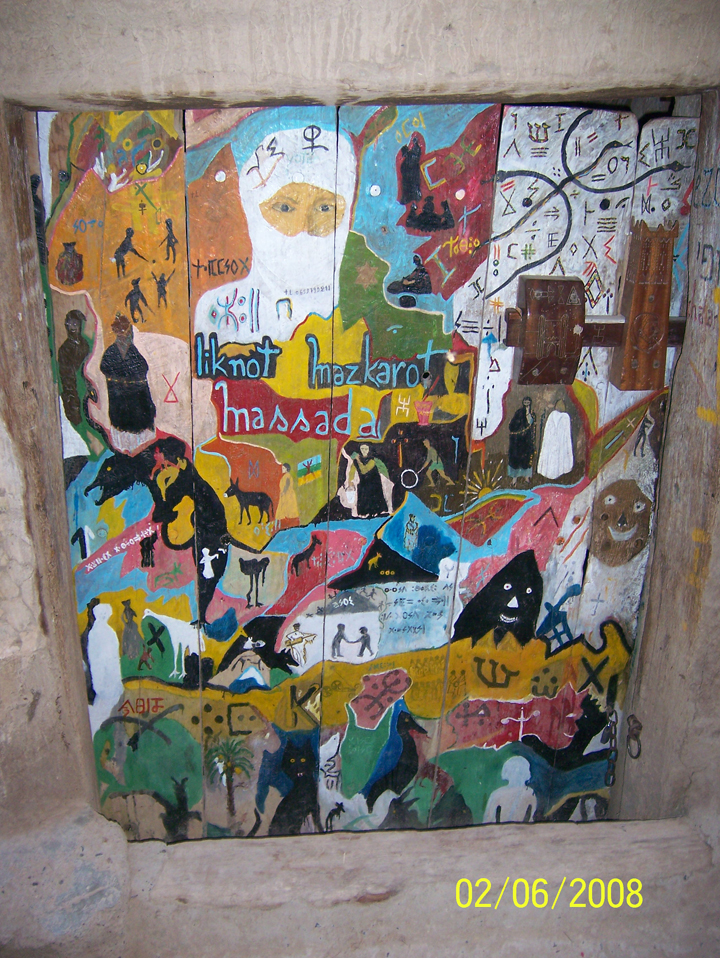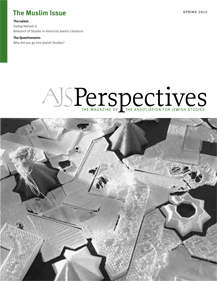
and displaying an Amazigh flag; Goulmima, Morocco, mid-2000s. Photo by author.

As egregiously, treating the Middle East and North Africa as not yet ready for democracy ignores the political openings created by the uprisings as spaces of hope. The emergence of new political actors might very well spur forward a stalled Israeli-Palestinian peace process. Leaders of the newly elected Islamist al-Nahda party in Tunisia, while opposing normalization with Israel, have reached out to local Jewish populations. Youth movements have created vectors of solidarity across national, religious, and ideological borders. And the movements have forced leaders across the region to scramble to introduce preemptive social, economic, and political reforms that, among other things, have expanded the rights and protections for women and ethno-religious minorities.
Moroccan Activism and Reform

mid-2000s. Photo by author.
For many critics these were but half steps that guaranteed neither full equality nor real political freedom, with press censorship still prominent, opposition activists still subject to arrest, and avenues for social mobility for those without Palace connections still largely blocked. Unemployment for youth in the 25–34 year-old range has been as high as 26 percent, and close to double that in urban areas. In the wake of Tunisian and Egyptian uprisings, these demands took on new fervor. Militants from labor unions, Islamist associations, and the Amazigh movement—groups that for years had done (sometimes bloody) battle in the press, the streets, and university campuses— united in an unlikely coalition for political change, calling for a more fair and inclusive parliamentary monarchy based on dignity, respect, and social justice. On February 20, 2011, and in subsequent months thereafter, they mobilized hundreds of thousands of demonstrators across the country. Their vision was nonsectarian and inclusive. A promotional YouTube video featured men and women, young and old, veiled and unveiled, Arabic- and Berber-speaking, all under the rubric of "I am Moroccan . . . and I want change." Demonstrators brandished placards with Arabic quotes from the Qur'an, human rights banners written in French, and Amazigh flags and standards. Their uniting slogan was "mamfakinch": "We will not be disunited."
King Mohammed VI quickly responded to this mass movement with promises of sweeping reforms and a new constitution. If the new constitution does not in any substantial way alter the king's absolute authority, it does invoke wide civil rights and emphasizes cultural, linguistic, and religious pluralism. Whereas previous constitutions had specified the nation as an "Islamic and fully sovereign state whose official language is Arabic," the new preamble adds that "Amazigh constitutes an official language of the State, as the common heritage of all Moroccans without exception" and invokes a "convergence" of Arab-Islamic, Amazigh, and Saharan (Hassaniyya) "components," "nourished and enriched by its African, Andalusian, Hebrew, and Mediterranean influences."
The Figure of the Jew
The preamble's invocation of Morocco's "Hebrew influences" is particularly striking. Certainly Morocco has cultivated expansive economic and cultural relations with Israel since the late-1970s, relations mediated by the nearly one million Israelis of Moroccan descent, as well as the hundreds of thousands of Moroccan Jews now living in France and the Americas. At various points the Moroccan state has variously embraced the small, remaining Jewish community, its religious practices, and heritage sites as signs of national authenticity and political liberalism. Nonetheless, such official performances of inclusion were generally limited to particular ritual contexts of pilgrimage, tourism, and cultural festivals—moments of intercommunal contact especially visible to the international press. The new preamble inscribes such an acknowledgment of the Hebrew elements of Moroccan culture in the supreme law of a land whose population is 99 percent Muslim.
Such a move is hardly self-evident. Anti-Zionist and occasional anti-Semitic discourse is common fare in the café political discussions of underemployed Moroccan men. While there is broad nostalgia for the former Jewish presence in the southern and eastern parts of the country, Jewish heritage sites and community centers are also the targets of occasional vandalism, as Aomar Boum details in this issue. The Palestinian cause continues to rally mass support, and pro-Palestinian slogans tend to accompany all marches and demonstrations. The February 20th Movement's website, Mamfakinch. com, for instance, includes several articles denouncing the Moroccan government's tacit normalization with Israel being in clear conflict with the fact that "the Palestinian cause is dear to the hearts of the Moroccan people."
Yet such dominant public opinion is increasingly fractured. Amazigh activists in particular have criticized the Moroccan opposition's political orientation towards Palestine as a distraction from domestic problems of inequality and marginalization. Indeed, the disagreement over the Palestinian question has often split the Amazigh movement from other militant organizations and led to occasional violent tensions. While by no means the agents of the Israeli state that Islamists occasionally accuse them of being, Amazigh activists see in the Zionist movement as a model for their own struggle. In the southeastern town of Goulmima where I lived in the mid-2000s, young militants have invoked their solidarity with Jews through artwork, graffiti tags of heart-filled variants of six-pointed stars, and revitalized masquerade festivals where they dress as "Jews" (udayen) as a sign of protest. Through such performances of anti-anti-Semitism, they present themselves to the watching world as liberal, tolerant modern subjects.
A New Morocco?
To a great extent, Morocco as a whole confronts the same political predicament internalized by Amazigh activists. The new constitution's ultimate audience may actually be an international community prone to question the future of officially Islamic states in a putatively secular world. Avowing the "Hebrew elements" of Moroccan culture certainly makes for good publicity in a geopolitical climate where Islam is too often amalgamated to anti-Semitism and terrorism. But such a declaration of anti-anti-Semitism is arguably more than merely a strategic resource; it calls forth a new Morocco of inclusion, pluralism, and transparency, a regime of governance premised on rightsbearing citizens rather than submissive religious subjects. It builds into law protections for minority ethnic and religious communities that could very well serve as a model for regional neighbors similarly making a transition from authoritarian rule. And that can only be good for the Jews.

